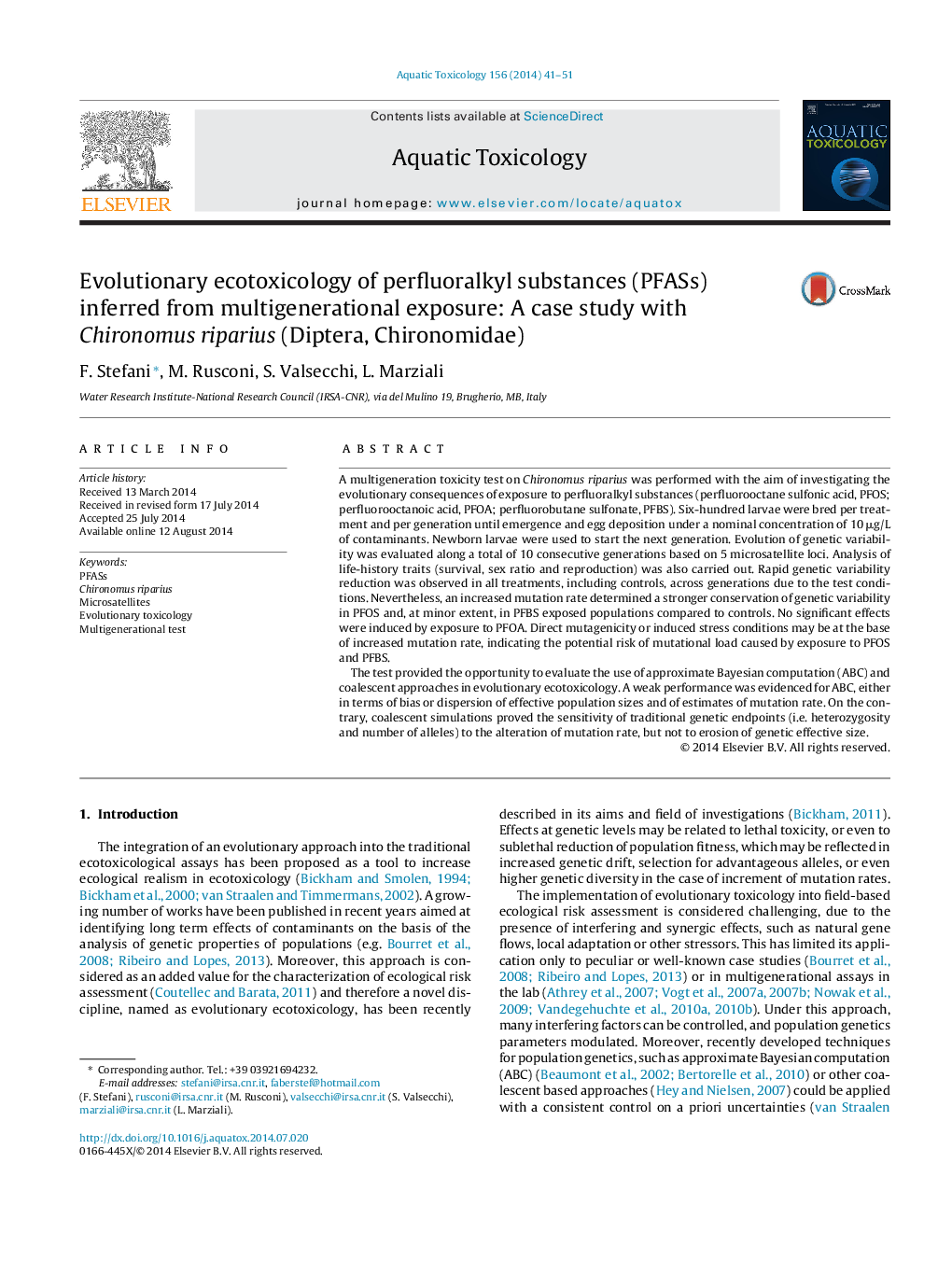| کد مقاله | کد نشریه | سال انتشار | مقاله انگلیسی | نسخه تمام متن |
|---|---|---|---|---|
| 4529123 | 1625949 | 2014 | 11 صفحه PDF | دانلود رایگان |

• Evolutionary ecotoxicology of PFASs was evaluated on C. riparius.
• Multigenerational exposure (nominal concentration 10 μg/L) lasted 10 generations.
• PFOS and PFBS caused an increase of mutation rate based on five microsatellite loci.
• Bayesian and coalescent analysis were applied: strengths and limits were discussed.
A multigeneration toxicity test on Chironomus riparius was performed with the aim of investigating the evolutionary consequences of exposure to perfluoralkyl substances (perfluorooctane sulfonic acid, PFOS; perfluorooctanoic acid, PFOA; perfluorobutane sulfonate, PFBS). Six-hundred larvae were bred per treatment and per generation until emergence and egg deposition under a nominal concentration of 10 μg/L of contaminants. Newborn larvae were used to start the next generation. Evolution of genetic variability was evaluated along a total of 10 consecutive generations based on 5 microsatellite loci. Analysis of life-history traits (survival, sex ratio and reproduction) was also carried out. Rapid genetic variability reduction was observed in all treatments, including controls, across generations due to the test conditions. Nevertheless, an increased mutation rate determined a stronger conservation of genetic variability in PFOS and, at minor extent, in PFBS exposed populations compared to controls. No significant effects were induced by exposure to PFOA. Direct mutagenicity or induced stress conditions may be at the base of increased mutation rate, indicating the potential risk of mutational load caused by exposure to PFOS and PFBS.The test provided the opportunity to evaluate the use of approximate Bayesian computation (ABC) and coalescent approaches in evolutionary ecotoxicology. A weak performance was evidenced for ABC, either in terms of bias or dispersion of effective population sizes and of estimates of mutation rate. On the contrary, coalescent simulations proved the sensitivity of traditional genetic endpoints (i.e. heterozygosity and number of alleles) to the alteration of mutation rate, but not to erosion of genetic effective size.
Journal: Aquatic Toxicology - Volume 156, November 2014, Pages 41–51